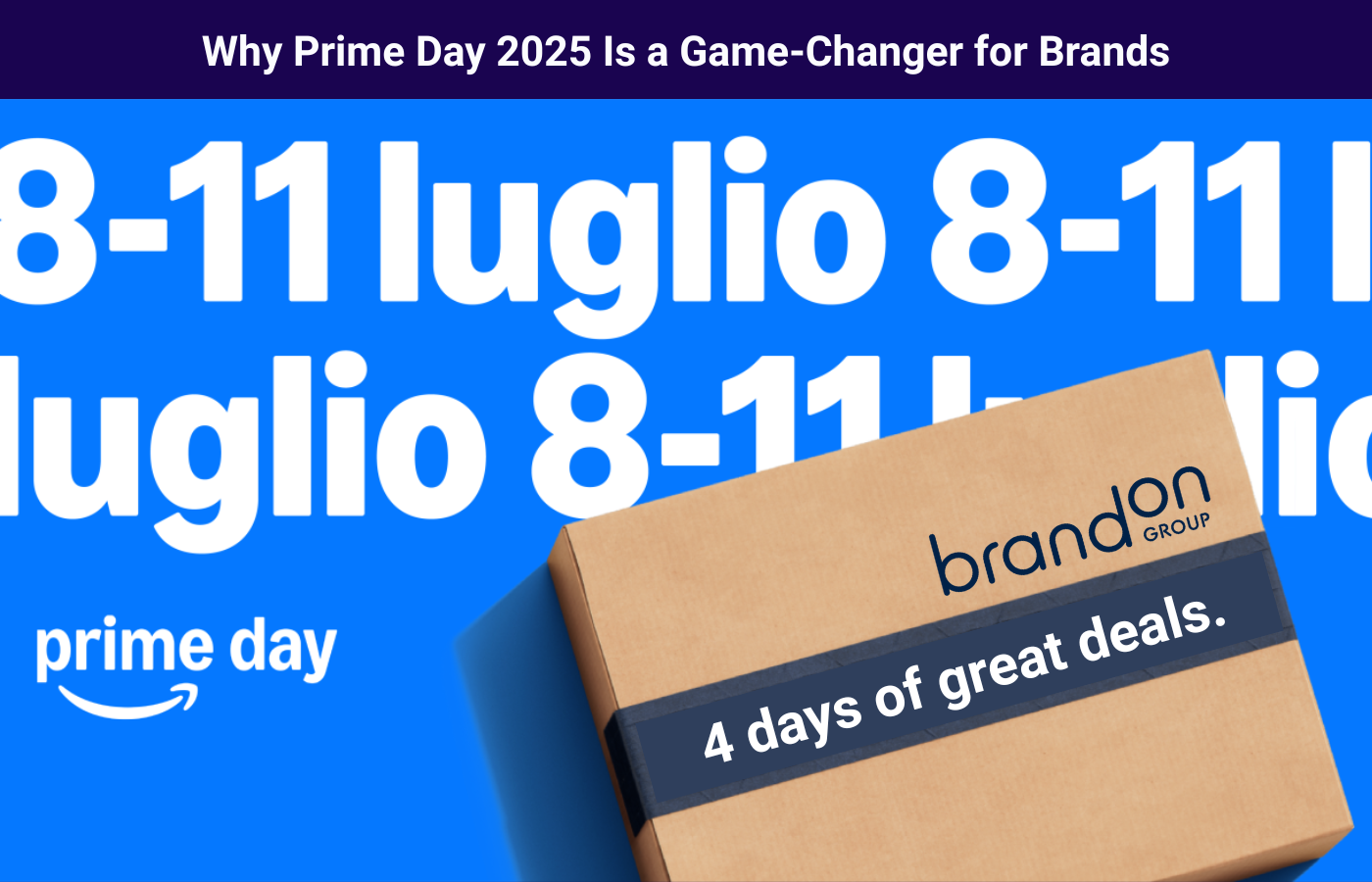Prime Day 2025: Records, Insights, and Strategies for Brands
Not Your “Usual” Prime Day: Four Days That Change the Pace
This year, Amazon has rewritten the rules: Prime Day is no longer a 48-hour flash event but a four-day marathon (July 8–11) that reshaped shopping habits and timing. When Amazon announced that Prime Day 2025 would last four days, many expected that converting a traditional lightning event into an “extended phenomenon” would significantly alter the dynamics—and indeed it did. More deals, more days to perceive value, but also—for certain aspects—more challenges.
It’s no surprise that Amazon called it “the biggest Prime Day ever,” with record sales and customers saving billions of dollars on millions of deals across more than 35 categories. The extension broadened the discovery window, reduced “buy-now” anxiety, and simultaneously raised the bar for brands and sellers: it’s no longer enough to launch a deal and hope. Strategic orchestration is now required.
Key Insights:
- Customers saved “billions of dollars” thanks to deals across more than 35 product categories.
- A record number of items were sold over the four days compared to any previous Prime Day or similar periods including a Prime Day.
- Popular items included Amazon devices like Fire TV Stick HD, Ring Battery Doorbell, Alexa-enabled products, as well as everyday essentials, home goods, beauty products, groceries, and frozen foods.
- New technology and AI features, such as Alexa+, the “Rufus” assistant, and AI Shopping Guides, played a role in deal discovery and user experience.
The New Ingredient: AI-Powered Discovery
On the experience side, Amazon emphasized Alexa+, Rufus, and AI Shopping Guides: tools that simplify product discovery and accelerate purchasing decisions, helping users find and decide faster. This is a paradigm shift: the interaction moves from a pure list view to guided recommendations, affecting visibility and conversion for well-optimized catalogs (titles, images, Q&A, A+ content). Brands that design product pages with AI “reading” in mind gain a competitive edge.
For brands, this means optimizing product pages and A+ content is no longer just beneficial for human shoppers but also for the AI assistants that analyze and recommend them.
Feedvisor’s analysis highlights:
- Day 1 captured the highest peak.
- Day 3 saw the natural decline.
- Day 4 experienced a significant rebound, driven by “last-minute deals.”
For categories like electronics, peak performance occurred at the beginning and end. The takeaway: brands that distributed budget and stock along the right curves won.
Not everything was perceived as “unprecedented”: some buyers felt certain discounts were shallower than in the past. At the same time, the four-day extension rewarded brands with planning (budget pacing, rotation of highlighted products, adequate stock) while penalizing those who front-loaded everything without reserving stock for the final rush.
Focus on Italy: Records, Everyday Items, and a Dedicated Festival
In Italy, the event followed the global four-day format. Official messaging highlighted deals on major brands and Made in Italy products, grocery promotions (including Fresh), and a physical celebration—the Prime Day Festival in Marina di Eboli—for Amazon’s 15th anniversary in the country.
Here too, spending showed an interesting mix: not only tech but also everyday essentials for stockpiling. For local brands, this is a valuable clue: Prime Day has become an opportunity to mix hero products with “everyday items.”
Prime Day 2025 has shown that it’s no longer just a flash sale. It’s a 96-hour ecosystem where technology, logistics, and communication must move in sync.
How the Four-Day Format Changed the Game:
- More breathing room for shoppers: The frantic urgency is reduced (at least somewhat), allowing more time to browse, discover, and in many cases, wait for better deals toward the end.
- Sales distribution over time: No longer a single flash-sale peak, but a wave that starts strong, dips slightly, and rises again at the end. Brands must manage the entire period, not just the first day.
- Challenges in maintaining perceived value: If users feel some deals weren’t much better than at other times, trust can be affected. Brands offering only superficial or hard-to-see discounts likely disappointed part of the audience.
For Italian brands, the challenge is clear: don’t just “offer a discount,” but communicate value by combining affordability with service.

